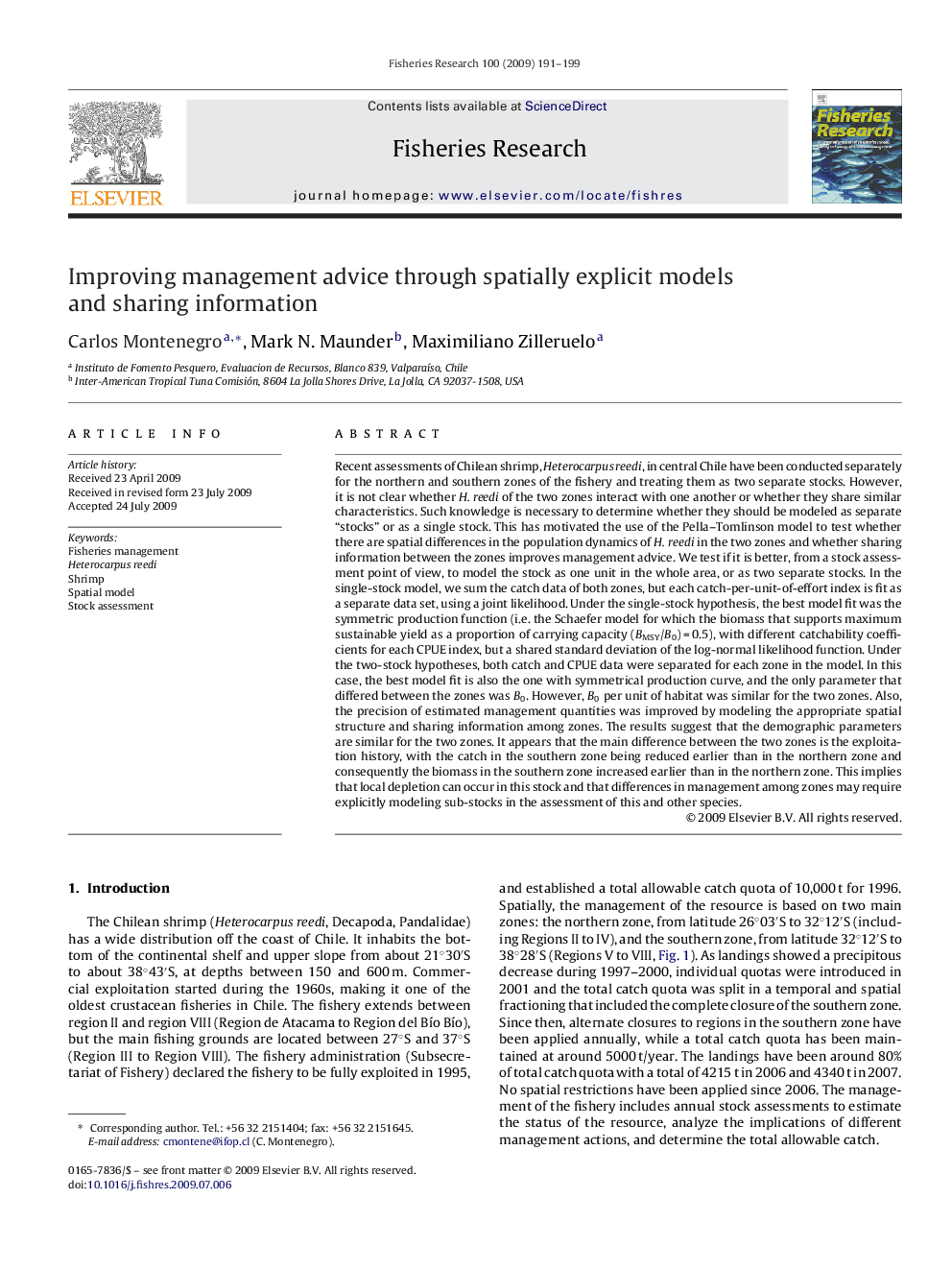| کد مقاله | کد نشریه | سال انتشار | مقاله انگلیسی | نسخه تمام متن |
|---|---|---|---|---|
| 4543805 | 1626853 | 2009 | 9 صفحه PDF | دانلود رایگان |

Recent assessments of Chilean shrimp, Heterocarpus reedi, in central Chile have been conducted separately for the northern and southern zones of the fishery and treating them as two separate stocks. However, it is not clear whether H. reedi of the two zones interact with one another or whether they share similar characteristics. Such knowledge is necessary to determine whether they should be modeled as separate “stocks” or as a single stock. This has motivated the use of the Pella–Tomlinson model to test whether there are spatial differences in the population dynamics of H. reedi in the two zones and whether sharing information between the zones improves management advice. We test if it is better, from a stock assessment point of view, to model the stock as one unit in the whole area, or as two separate stocks. In the single-stock model, we sum the catch data of both zones, but each catch-per-unit-of-effort index is fit as a separate data set, using a joint likelihood. Under the single-stock hypothesis, the best model fit was the symmetric production function (i.e. the Schaefer model for which the biomass that supports maximum sustainable yield as a proportion of carrying capacity (BMSY/B0) = 0.5), with different catchability coefficients for each CPUE index, but a shared standard deviation of the log-normal likelihood function. Under the two-stock hypotheses, both catch and CPUE data were separated for each zone in the model. In this case, the best model fit is also the one with symmetrical production curve, and the only parameter that differed between the zones was B0. However, B0 per unit of habitat was similar for the two zones. Also, the precision of estimated management quantities was improved by modeling the appropriate spatial structure and sharing information among zones. The results suggest that the demographic parameters are similar for the two zones. It appears that the main difference between the two zones is the exploitation history, with the catch in the southern zone being reduced earlier than in the northern zone and consequently the biomass in the southern zone increased earlier than in the northern zone. This implies that local depletion can occur in this stock and that differences in management among zones may require explicitly modeling sub-stocks in the assessment of this and other species.
Journal: Fisheries Research - Volume 100, Issue 3, November 2009, Pages 191–199